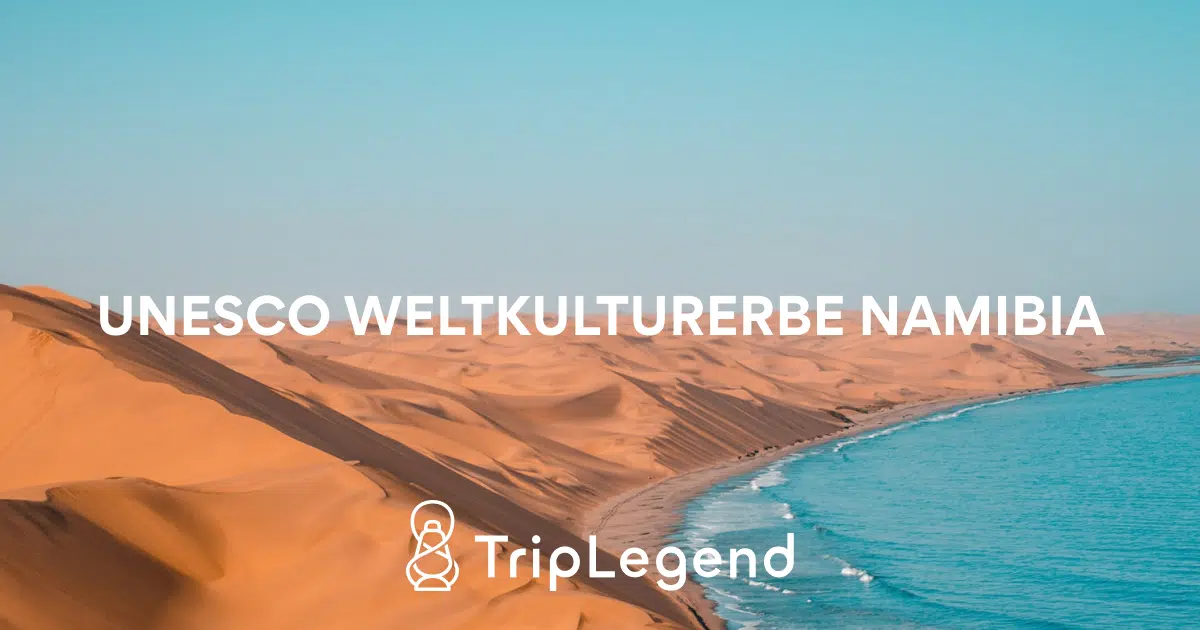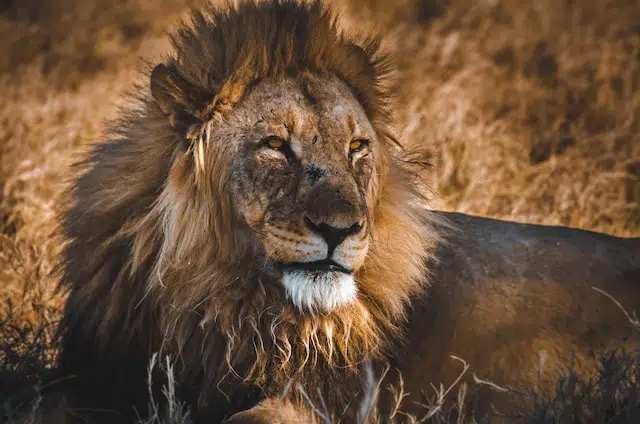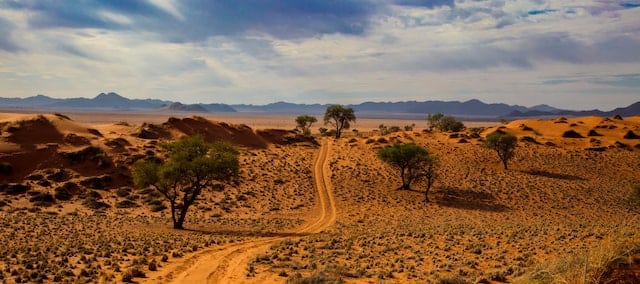Dive into the world of unique rock engravings, a gigantic sand sea, Antarctic waters and an incredible cultural landscape of UNESCOS Namibia. Read on to learn more about 6 highlights.
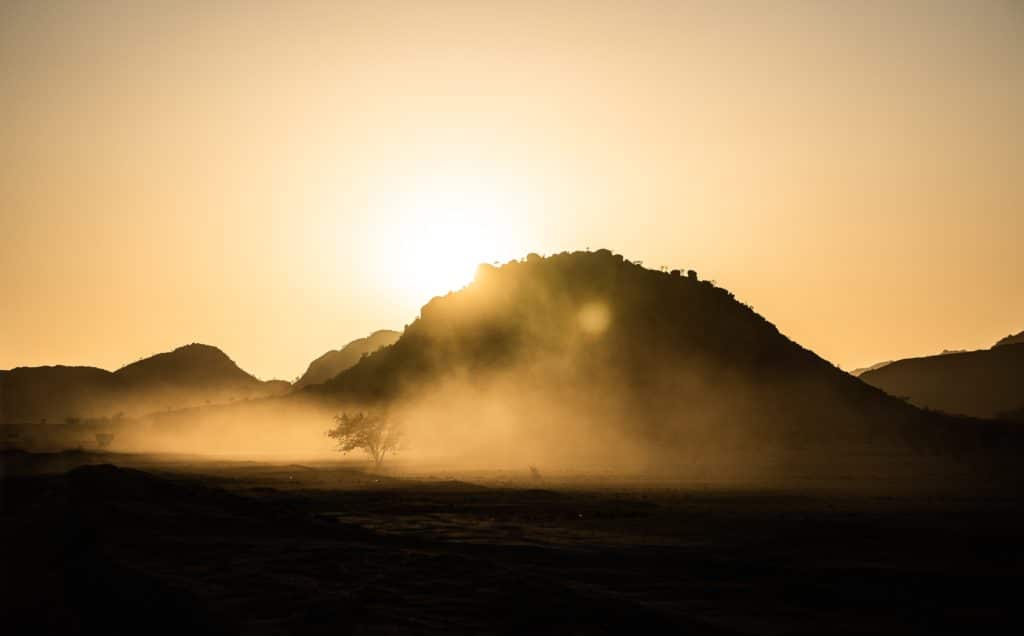
Twyfelfontein - unique rock engravings
Twyfelfontein is the name of a valley and the associated spring of Namibia. Translated, Twyfelfontein means the source of doubt. The spring is located in the Damara Mountains and in the language of the Uri-Ais (inhabitants) it is called "the jumping spring".
The UNESCO heritage became known for its countless rock engravings (petroglyphs). Today one counts over 2500 works of art on rocks, which are approx. 1,000-10,000 years old. The works were created by the San's and the special thing about them is that they were not butchered with metal tools. One found quartz splinters, accordingly it is assumed that tools from quartz were used.
Hunting scenes, inhabitants with bows and arrows, many animals and even a seal, although the sea is 100 km away, stand out on the gigantic rock walls. Twyfelfontein is on the World Heritage List since 2007 and can be visited only with a guide.
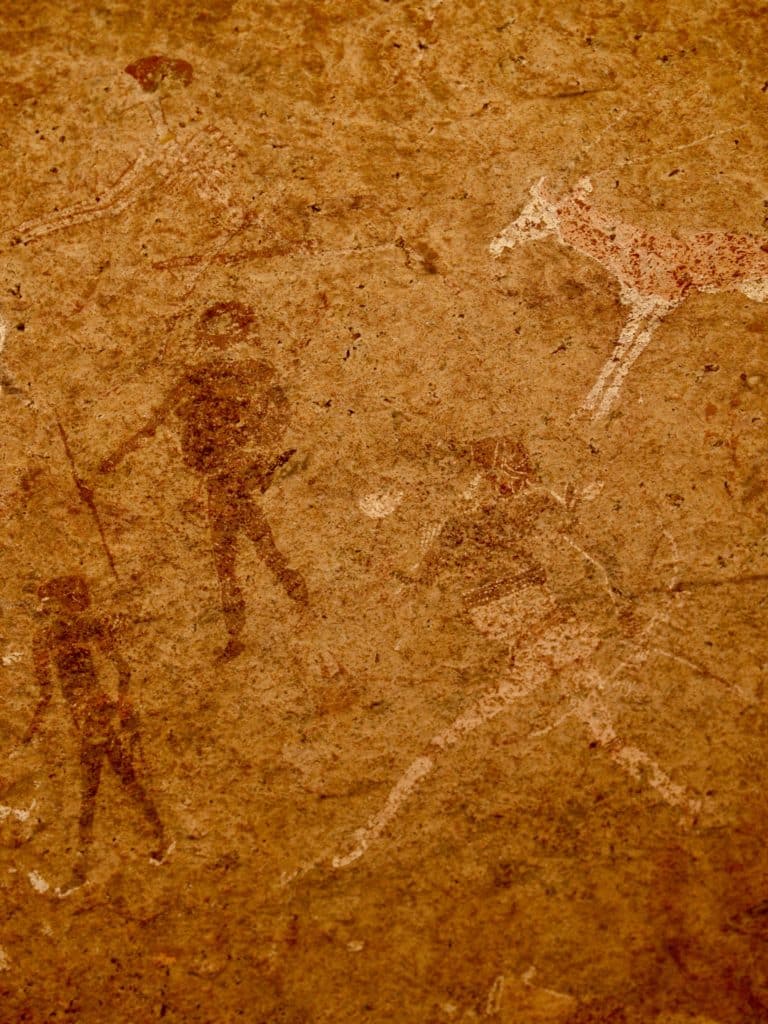
Namib - sand sea
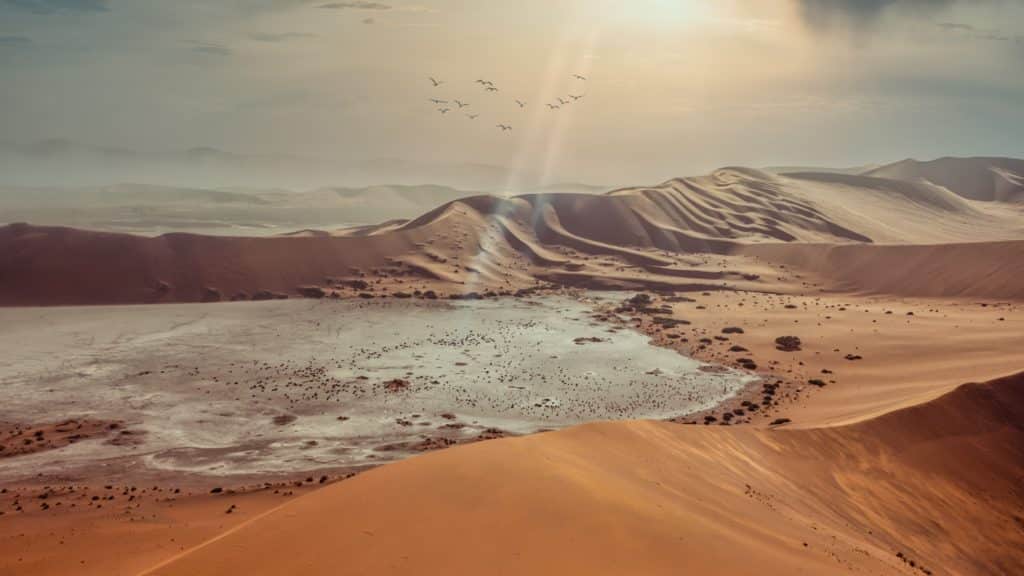
The oldest desert on the planet and probably the driest area on earth is contradictorily made up of rivers in a sea of sand. The origin lies in the southwest, where two rivers that could not be more different meet. The Atlantic Ocean and the sand sea of the Namib Desert. The area is comparable to Belgium and calculates a size of about 31,000 square kilometers. Dunes up to 350 meters high can also be measured here and reflect the beauty of the dune sea.
The sand sea cannot spread further north because of the Kuiseb River. The river is dried up most of the time, but as soon as it rains far away, in the mountains, so much water flows through the Kuiseb for days, if not weeks, that it is sufficient to wash away the sand that has been blown there.
Since 2013, the sand sea has been located on the List of World Heritage Sites and is characterized by a diversity of animals and plants, breathtaking shapes, colors and of course the sand.
Fish River - the second largest canyon in the world
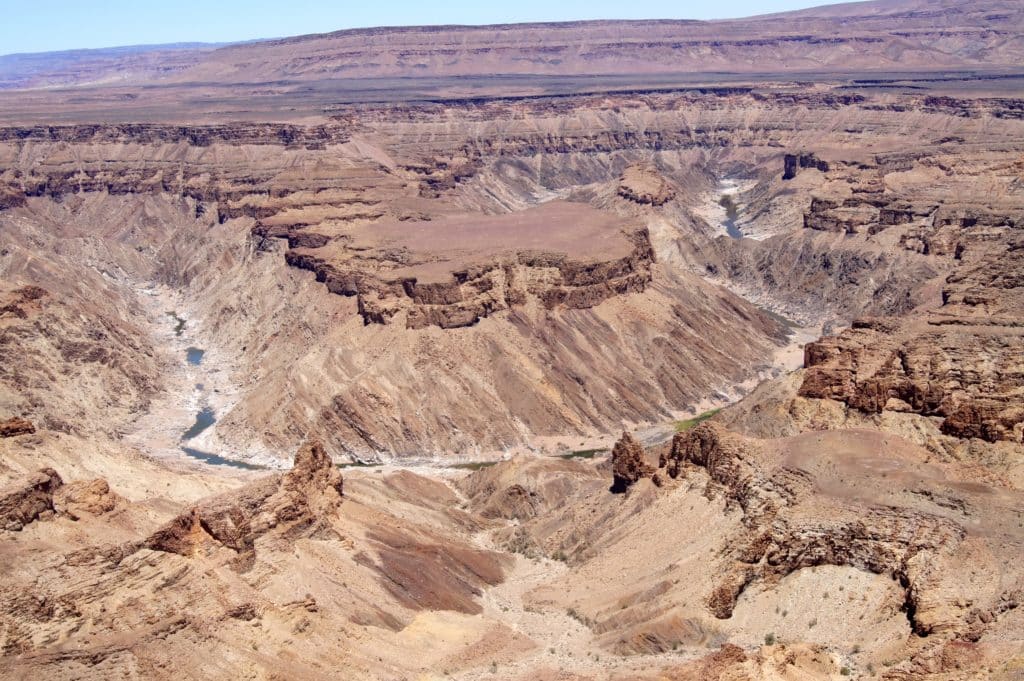
The largest canyon in Africa and the second largest in the world after the Grand Canyon is 160 km long, 27 km wide and 500 m deep. It was formed 350 million years ago by a 20 km wide rift. When the rupture of the primordial continent Gandwana happened 120 million years ago, the canyon created a canyon system that, as mentioned, continues for 160 km.
Ecosystems of the Benguela Current
This is where Antarctic waters meet the South Atlantic. The cold and oxygen content of the current attracts numerous species of fish. The main cause of this is the Namib Desert. The ecosystem can count itself as one of the UNESCO World Heritage Sites since 2016.
Cultural landscape of the San
The cultural landscape provides information about history, livelihoods and collective memory. Today it is part of a nature reserve and part of the Kgalagadi Transfrontier Park. Sand dunes, grasses, isolated trees, groups of trees and dry riverbeds, where the water runs underground, which is why the riverbeds are greened, can be seen here in a different way.
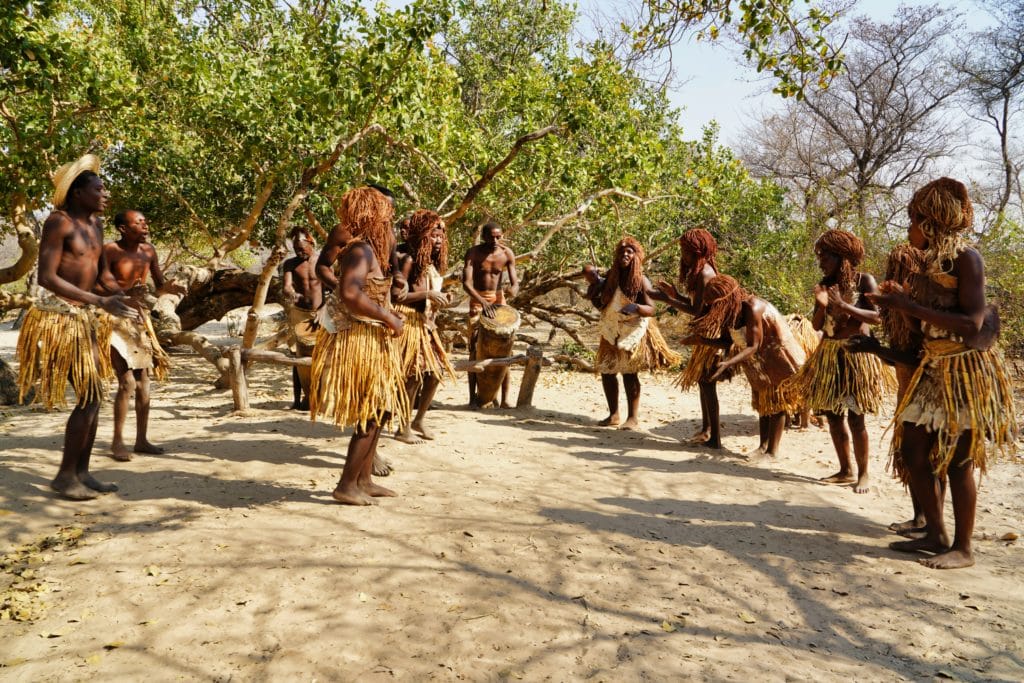
Human settlement, or Khomani San of the cultural landscape, is something very special. Since the Stone Age to the present day, the hunter-gatherers have lived there. One of the reasons why the Khomani San have made it to UNESCO is the history, migration, livelihoods and over and living strategies despite their minimalist way of life.
Marula Fruit Festival
The Marula Fruit Festival, also called Omagongo Cultural Festival, is a 2-3 day festival between March and May. During these 2-3 days, 8 communities of northern Namibia unite to celebrate with the alcoholic drink made from the Marula fruit. About 5000 people in colorful and traditional dresses participate in this festival.
The men make traditional wooden cups before the festival and decorate them. They drink from them afterwards. In addition, useful hand tools, with which the women cut the pulp out of the fruit, are made. The women make terracotta vessels in advance, in which the marula juice ferments for 3 days.
The 3 days will be spent singing, dancing, eating and drinking.
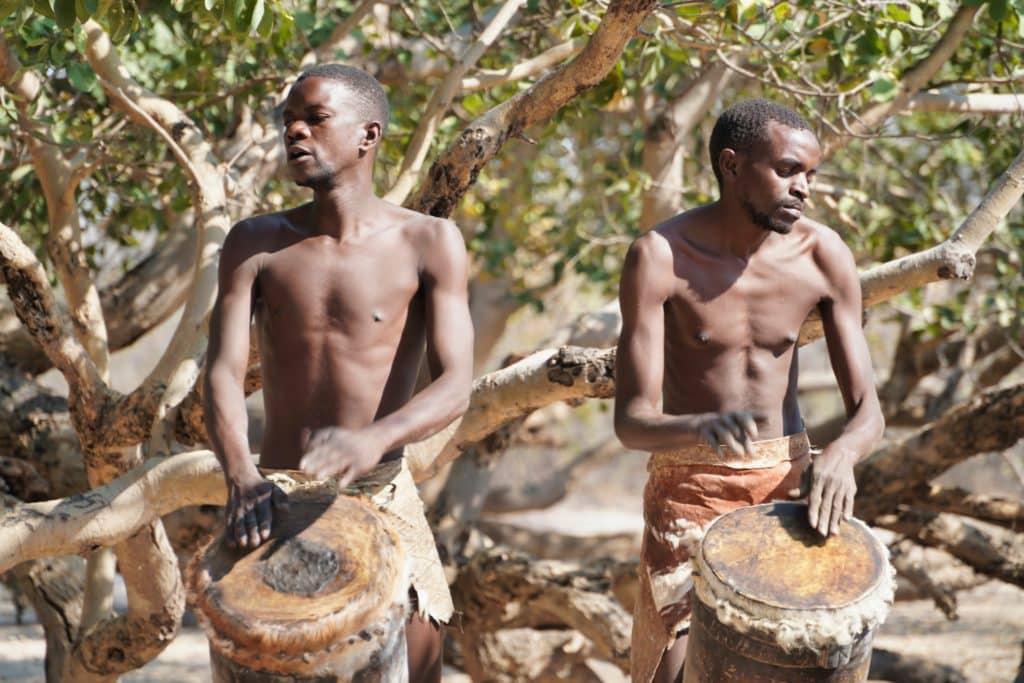
Are you interested in experiencing Namibia's UNESCO World Heritage Site? Then check out the Namibia Adventure or get more inspiration on Instagram.
